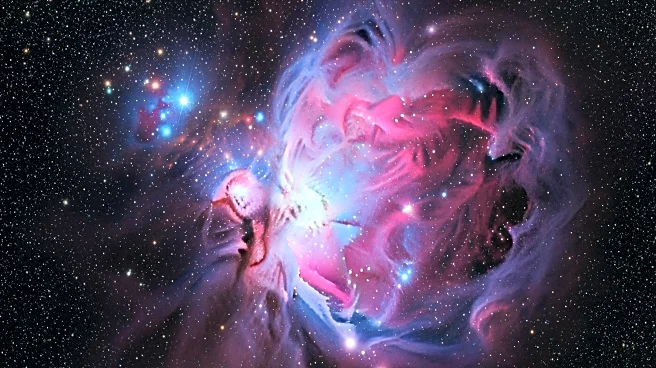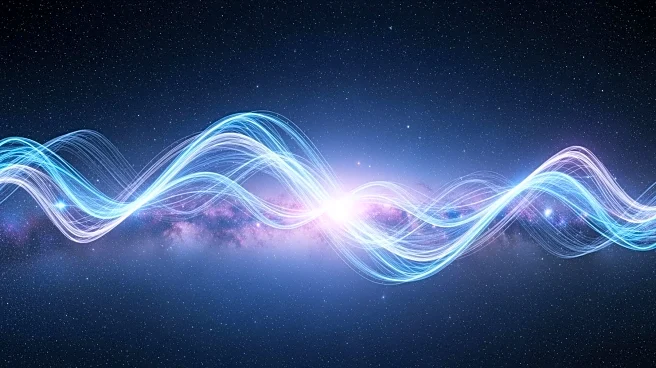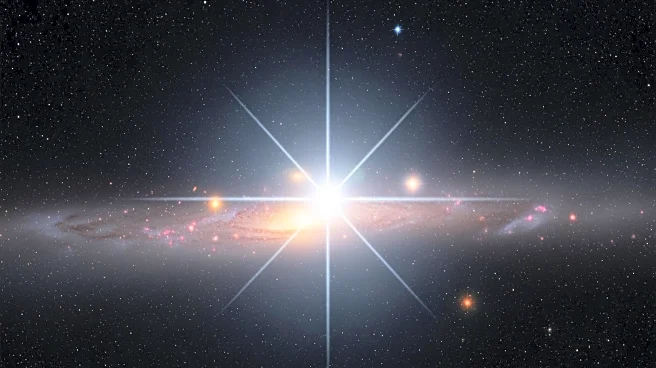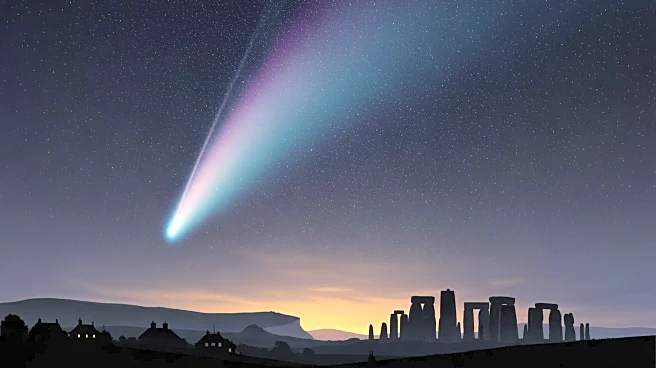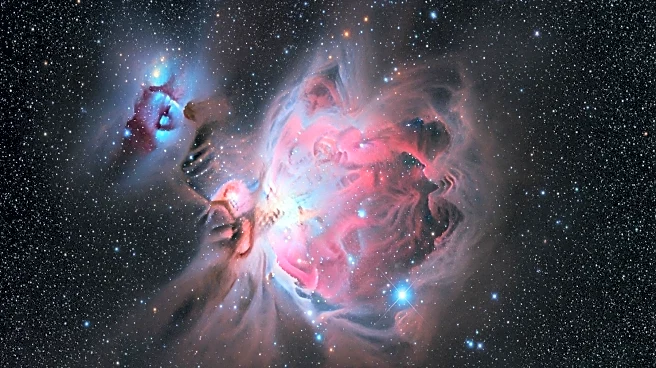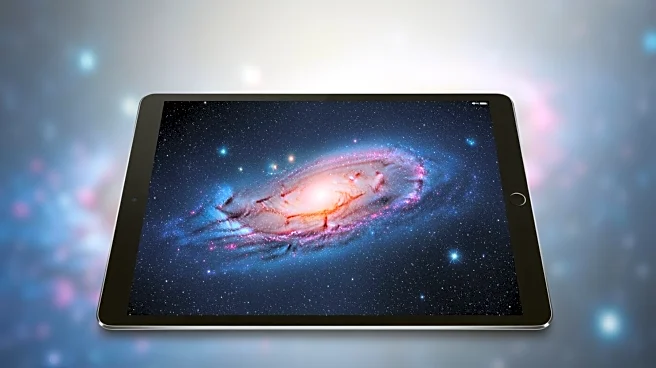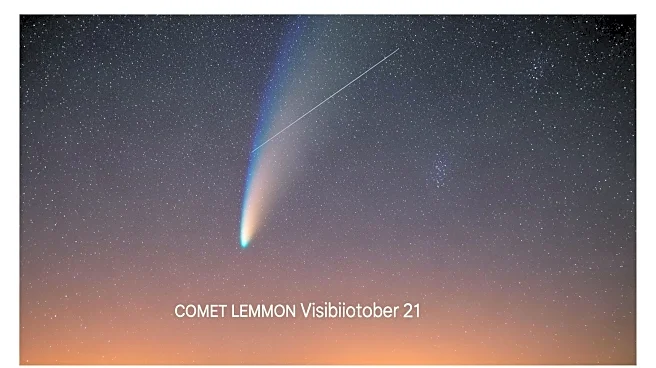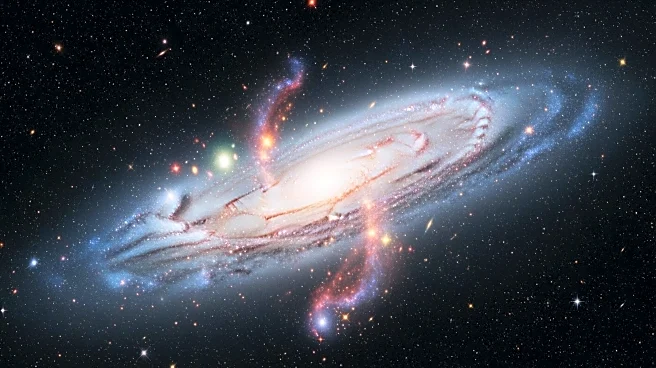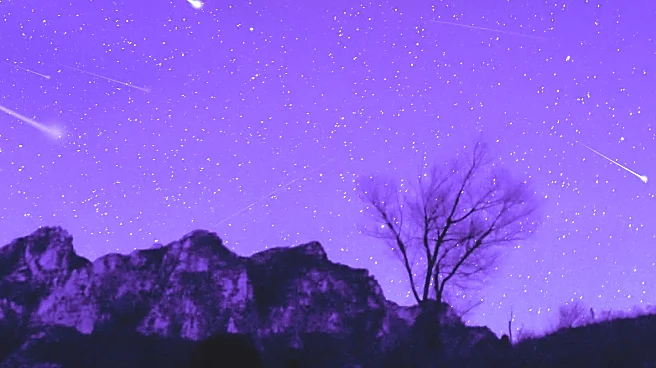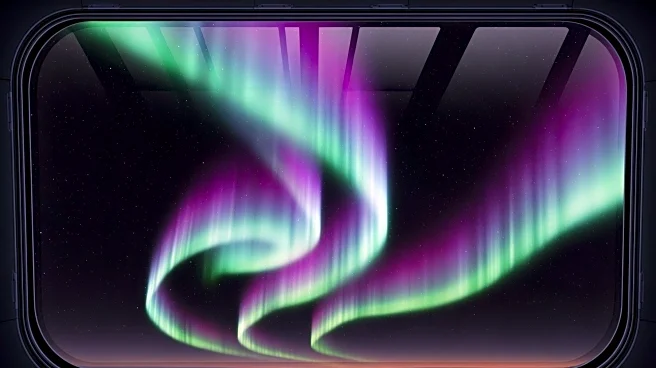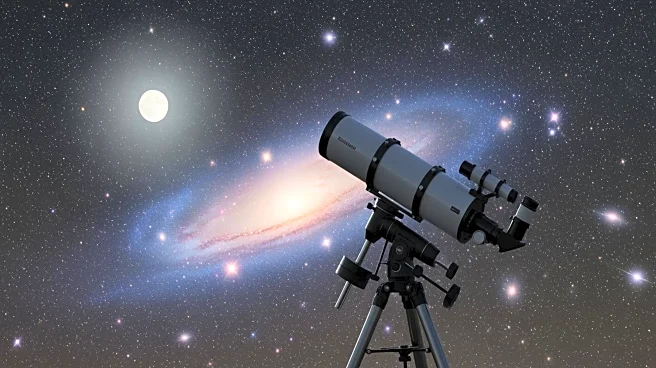What's Happening?
Astrophotographer Ronald Brecher has successfully captured a stunning image of the Heart Nebula (IC 1805), located approximately 6,000 light-years away in the Perseus spiral arm of the Milky Way. This nebula, named for its heart-like shape, is a significant
star-forming region. The image showcases a vibrant array of colors, highlighting the energetic young stars at the nebula's center, which are actively shaping dense dust pillars with their radiation. The Heart Nebula is situated near the bright star Segin in the constellation Cassiopeia, visible high above the northern horizon around midnight in October. Brecher's photograph also includes the Fishhead Nebula, a knot of dust and gas with a distinctive aquatic appearance. The image was captured using an astronomy camera mounted on a Sky-Watcher Esprit 70 EDX refractor telescope over 40 hours in September, utilizing astrophotography filters to assign specific colors to different wavelengths of light.
Why It's Important?
The capture of the Heart Nebula's vibrant display is significant for both the scientific community and amateur stargazers. It provides a detailed view of a star-forming region, offering insights into the processes that shape cosmic structures. For astrophotographers and astronomy enthusiasts, such images serve as inspiration and a benchmark for capturing deep space phenomena. The use of advanced astrophotography techniques and equipment highlights the accessibility of space exploration to non-professionals, encouraging public interest and participation in astronomy. Additionally, the image contributes to the broader understanding of the Milky Way's structure and the dynamic processes occurring within star-forming regions.
What's Next?
Astrophotographers and stargazers may be inspired to capture their own images of the Heart Nebula and other celestial phenomena. The availability of advanced telescopes and astrophotography equipment makes it possible for enthusiasts to explore the night sky and contribute to the growing collection of cosmic imagery. As interest in astrophotography grows, more individuals may engage in capturing and sharing their observations, potentially leading to new discoveries and a deeper appreciation for the universe. Space.com encourages readers to share their astrophotography, fostering a community of space enthusiasts and promoting the exchange of knowledge and experiences.
Beyond the Headlines
The vibrant imagery of the Heart Nebula not only captivates viewers but also underscores the importance of preserving dark skies for astronomical observation. Light pollution remains a significant challenge for stargazers and astrophotographers, impacting the visibility of celestial objects. Efforts to reduce light pollution can enhance the quality of astronomical observations and ensure that future generations can enjoy the beauty of the night sky. Additionally, the image serves as a reminder of the vastness and complexity of the universe, prompting philosophical and existential reflections on humanity's place within the cosmos.
